Finishing the facade of the house "Bark beetle"
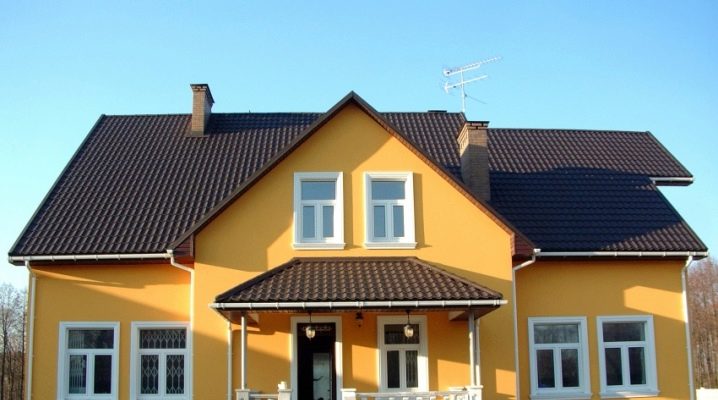
Any building, regardless of its purpose, should have a stylish and presentable look. Therefore, when designing it, great attention should be paid to the decoration of the facade. Today the modern market is represented by a variety of facing materials. The most popular among them is the decorative plaster "bark beetle", which allows you to create original design masterpieces.
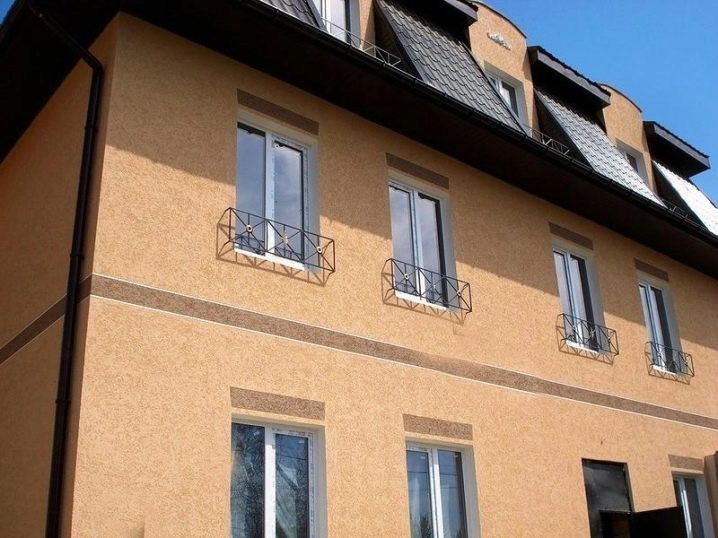
Peculiarities
This material is characterized by high performance, it is easy to apply and looks perfect in different styles. Facade plaster "bark beetle" is considered a unique finishing material. When covering the base, it creates a surface with many pits, stripes and grooves. Due to such an original texture, you can hide the flaws of the walls, mask their irregularities.
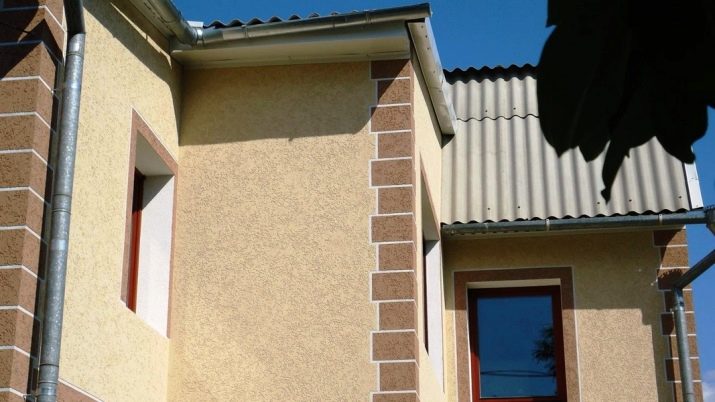
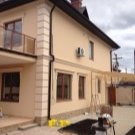
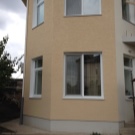
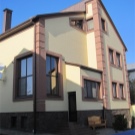
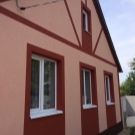

They produce acrylic and gypsum-based plaster in the form of dry powder or ready-to-use mixture. The grain structure gives the coating an unusual design. It contains fine marble chips. The grain sizes can be different (from 0.8 to 3.5 mm). Depending on this, the relief of the finish acquires small or large grooves.

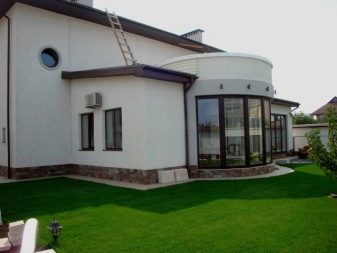

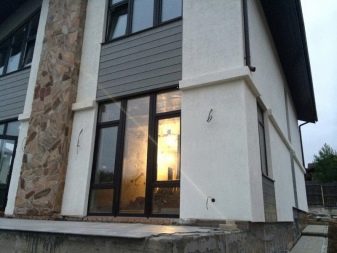
With the help of such plaster, you can beautifully decorate any surface. It is in great demand when performing external work, when the facade is faced. Usually the color of the material is white or gray. Therefore, immediately after its application, the surface of the facade is painted, choosing for this a shade corresponding to the design.
Advantages and disadvantages
The main advantages of plaster "bark beetle" include several advantages.
- High strength and environmental friendliness. The material is made from natural raw materials. The special production technology makes it reliable in operation.
- Low weight. The mineral fillers included in the plaster make it lightweight. They reduce the level of mechanical stress on the building structure.
- Resistance to environmental influences. Plaster perfectly tolerates direct sunlight and temperature changes, it is not afraid of moisture. In addition, this finish does not fade and does not lose its original color during the entire service life.


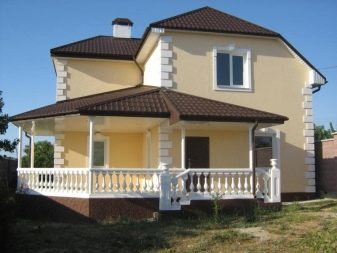

- Refractoriness. The material has a low combustion coefficient.
- Resistant to mold and mildew. The special composition of plaster mixtures reliably protects the surface from the development of microorganisms.
- Huge selection of colors. Although the base material is white, you can change its shade as desired.
- Affordable price. Products of domestic and foreign manufacturers are presented on the market. Anyone can purchase material that suits their budget.

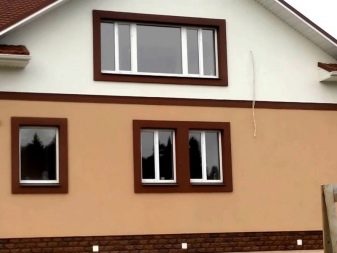
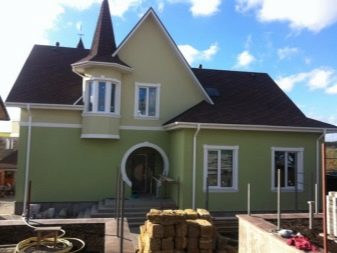
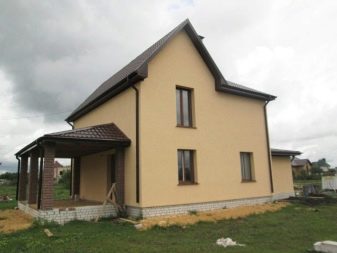
As for the shortcomings, there are not many of them. If the finish "bark beetle" has undergone serious mechanical damage, it is difficult to eliminate them. To restore the appearance, you will have to perform the cladding again, removing the damaged coating. Plaster is not easy to use. It requires a special application technology. Often, you cannot do without the help of specialists to perform complex decor.

However, not everyone can reproduce the texture of a tree carved by beetles professionally. There are also secrets here. For example, you need a special trowel.Furrows are created by moving the tool up and down. Then the cladding is somewhat smoothed. The complexity of cleaning the surface also matters. Dust can enter the furrows. It is difficult to remove dirt from the embossed surface.
Types of material
Decorative plaster "bark beetle" is offered on the market of finishing materials in two varieties: based on gypsum and acrylic. The acrylic mixture is applied using special technologies, thanks to which the facade is attractive. But in order for the walls to acquire visually rich decor, you need to take into account many nuances of decoration. Material is sold in buckets of different sizes. The mixture can be applied to cement-bonded concrete walls and concrete substrates.
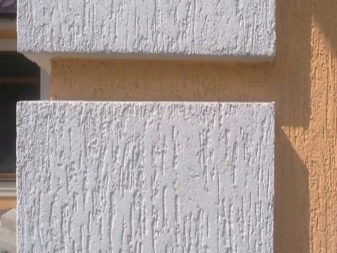
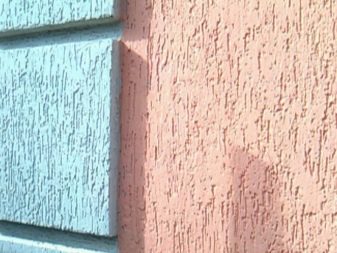
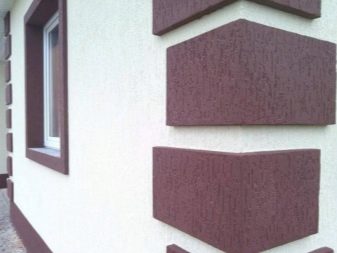
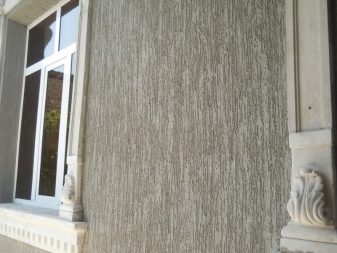
To give the acrylic plaster the desired color, it is necessary to use a special color scheme. This is usually done using computer technology on special machines, since it is difficult to manually obtain the desired shade. The material contains abrasive granules. At the same time, manufacturers can add various minerals and marble chips to it. The grain size of the acrylic variety depends on the size of the abrasive and ranges from 0.1 to 3.5 mm.
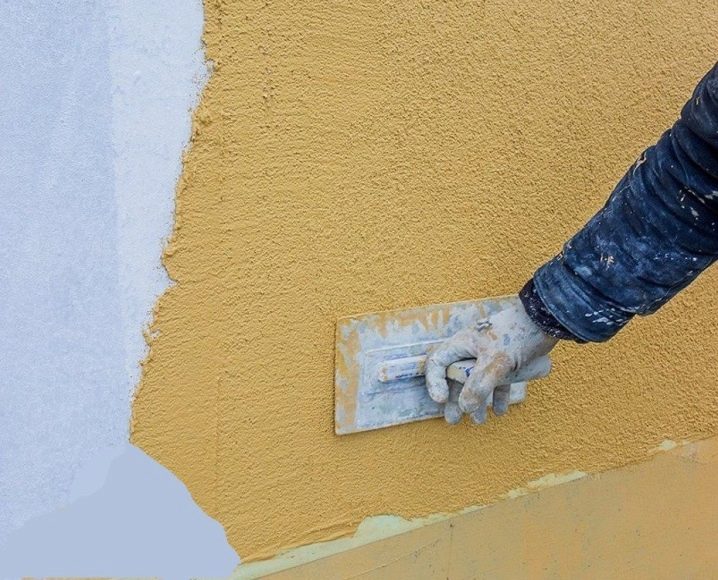
The service life of the plastered coating is up to 15 years. The unique structure ensures an ideal application of the mixture, which, after drying, is not exposed to external influences and does not crack. In addition, the material has high adhesion. To obtain any color of plaster, you do not need to additionally paint the facade. The only drawback of acrylic plaster is the complexity of the finish.
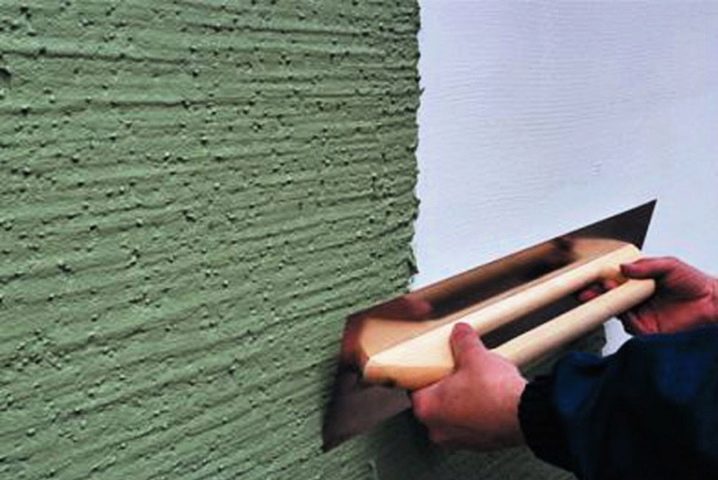
The gypsum-based analogue is easier to use and economical in consumption. The complexity of working with the mixture lies in the fact that before using it, you must prepare the solution yourself by mixing dry powder with water. Gypsum plaster is produced from ecological raw materials, it is easy to apply it to the walls by hand. The material is inexpensive and has high strength.
Depending on what binding component is included in the plaster, "bark beetle" is silicate and silicone. The silicate version is produced on the basis of liquid glass. It is characterized by microbiological resistance and vapor permeability. Silicone plaster is made from modified acrylics and silicone resin. It is resistant to chemical attack and is often used when working with stone.

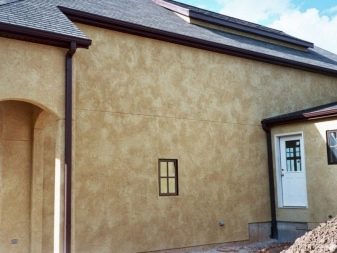
Color spectrum
To give the design bright colors, the mixture must be tinted in the desired shade. Plaster-based material is easier to paint as it is sold dry. When mixing it, you can add any dye. For acrylic renders, getting the actual color is much more difficult. Care should be taken during staining, otherwise the shade will be too saturated.
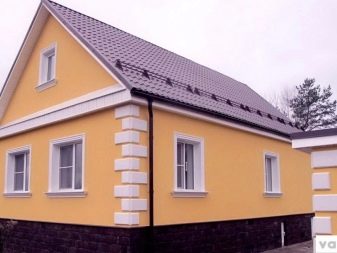
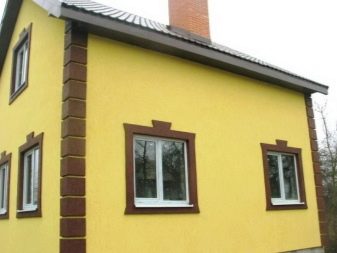
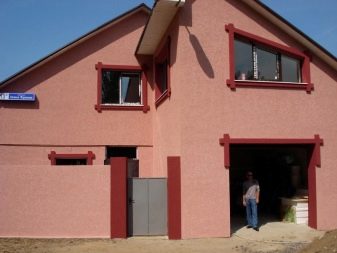
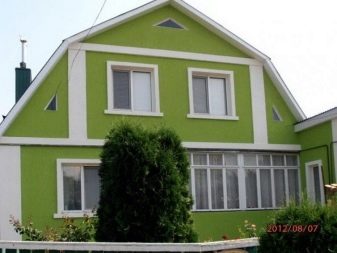
However, the material does not have to be tinted at all: the plastered surface can be painted with enamel, choosing for this a paint on the same basis as the plaster. Today warm colors of the palette prevail in modern design of facades. Wall decoration looks beautiful in yellow, red, brown and beige shades. It is necessary to choose the color of the facade taking into account the general style of the design of the land plot. A good option for country houses would be gray and green facade cladding. At the same time, you should not design surfaces in a monochromatic manner, it is better to create compositions consisting of several colors.
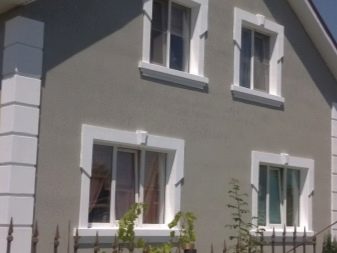

Manufacturers overview
Facade plaster "bark beetle" is produced by many trade marks. The main sales leaders are Ceresit, Baumit, Dufa. Their products have proven themselves to be the best and have received positive customer reviews. This plaster allows you to decorate surfaces in an original way and reliably protect building structures from the negative effects of the external environment.Working with such plaster is not difficult: the mixture is sold ready-made, there is no need to spend additional time on its production.


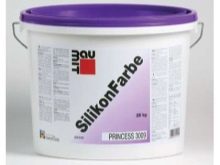
The Unis group of companies, which consists of foreign and Russian manufacturers, deserves special attention. Unis plaster has high strength and durability. Mixtures are available in ready-made and powder form. Plastered surfaces with the "bark beetle" effect are resistant to the formation of mold and mildew, they can withstand low temperatures and do not fade in the sun.
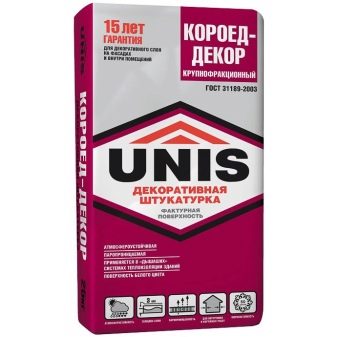
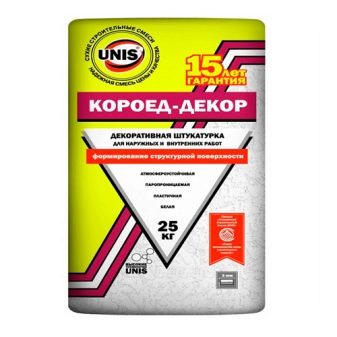
Necessary calculations
The main point when working with the "bark beetle" mixture is the correct calculation of its consumption. This must be done in order to prepare the required amount of solution, since its useful life is limited. If you prepare a lot of the mixture, the excess will have to be thrown away. If there is a lack of it, you will have to break away from the workflow, which will entail a poor-quality finish (the edges will instantly grab, the texture will be broken).

The amount of plaster depends on the characteristics of the base on which it will be applied. In the event that the coating has irregularities, it will be necessary to increase the thickness of the cladding layer. As a rule, each manufacturer indicates on the recommendation box how to calculate the consumption of the mixture. On average, 1 m2 needs up to 3 kg of plaster. However, if the walls absorb the composition well, the consumption will increase.
Plastering technique
The exterior decoration of the house is considered the most important stage of construction work, as it gives the building a final look.
The finishing technology consists of several successive steps.
- First, carefully prepare the work surface. To do this, you need to install beacons on the wall and align the covering under them.
- Then priming is carried out. You can apply normal and acrylic solution. The best option would be the one with more penetrating power.
- After the base is ready, the mixture is applied. Facade cladding is best done with coarse plaster. The solution is spread over the wall with a steel trowel.
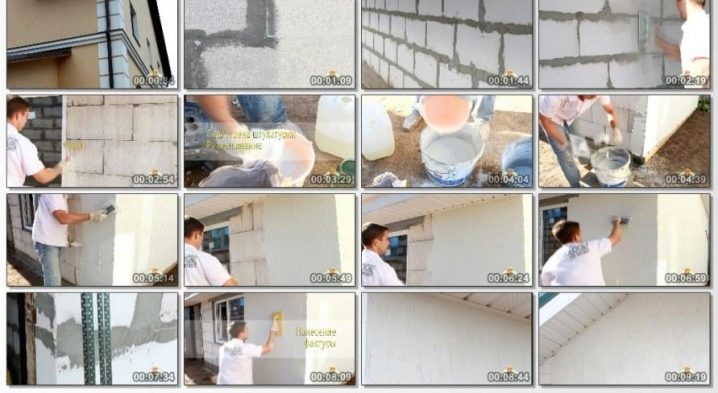
- In the event that it is necessary to decorate not the entire surface, but only a separate section, the adjacent walls are insulated with masking tape.
- The next step is to create a texture using a float. To do this, in a circular motion, a float is carried out over the plaster. The drawing will not look very attractive at first. The final effect will only be noticeable when the finish is completely dry.
- The final stage is considered to be the coating of the decorative finish with a protective varnish, which will give the surface a matte or glossy appearance.
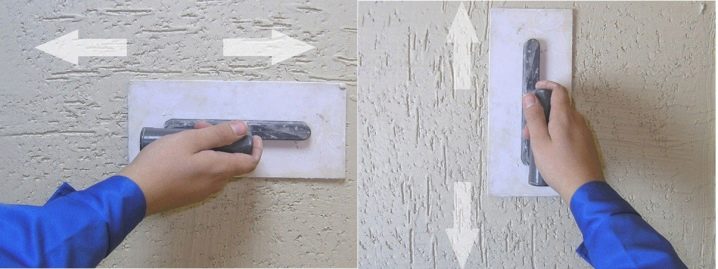
When working, it is necessary to observe the layer thickness, which should be equal to the grain size. The application technique is similar to the classic putty, but in this case the plaster is slightly stretched over the surface until furrows are formed. It is impossible for the material to stick to the grater when forming patterns. If this is observed, you should give the plaster time to dry, then you can repeat the steps.
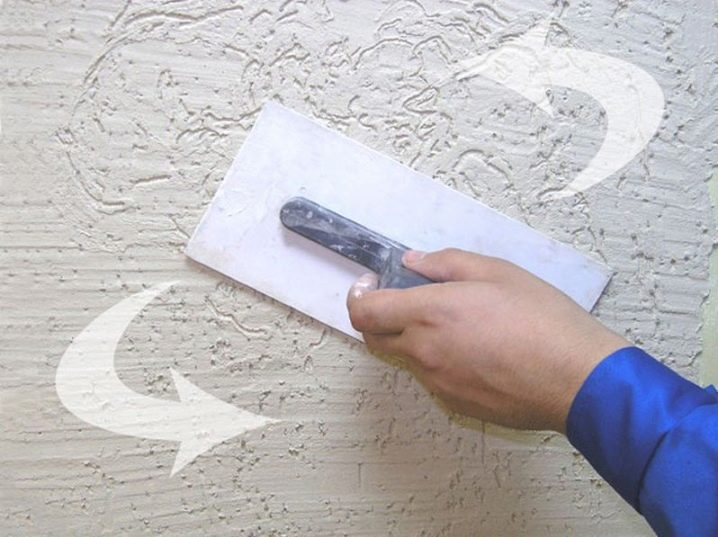
Examples of beautiful design
Today, there are many options for finishing facades using plaster "bark beetle". Plastered surfaces look good in the design of one-story, two-story buildings. Unlike other types of facing materials, "bark beetle" allows you to create an interesting relief and gives the building an individual image.


For example, the original solution will be the design of a private house "antique". For this, the facade should be decorated with dark plaster. You need to try to ensure that the surface acquires the most similar texture. To complement the composition will help the stone finish of the basement, as well as forged elements, a massive staircase and columns.
For lovers of the classics, a facade design is suitable, which will be characterized by simple, severity of forms, and elegance. Finishing must be done with acrylic plaster, choosing light shades. Such a house will look harmonious and comfortable.Red is also a good choice for wall cladding (especially for large two-story buildings). To make the exterior harmonious, the roof needs to be laid out of tiles, and in the bar, additionally, gazebos made of red brick should be installed.
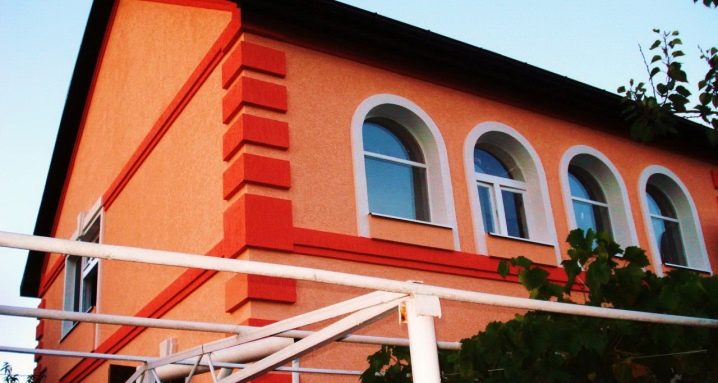
For small houses, it is best to combine decorative plaster with other natural materials. A great idea would be to finish the facade, in which there will be inserts made of natural stone and wood. In this case, the roof in this case must be made of tiles. To emphasize the beauty of the façade, it is recommended to make florists next to the house. The paths leading to the garden and recreation area can be laid out with a shell rock.
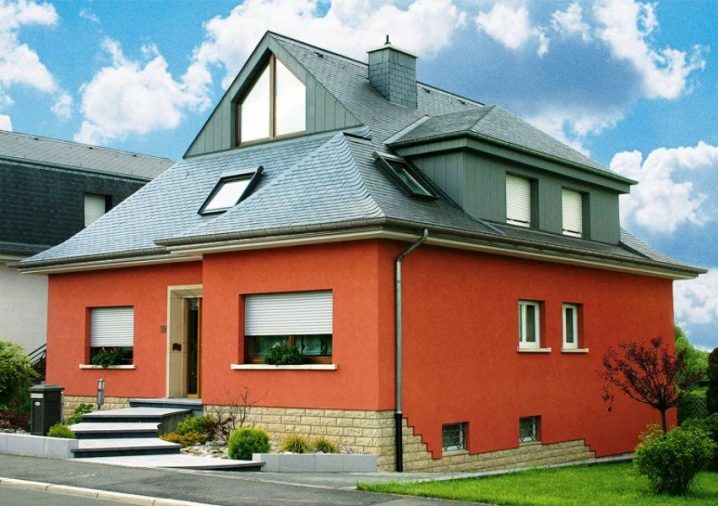
Most country houses have balconies and terraces in their design. It is desirable to plaster them into one texture, but several color shades can be used for decoration. Due to this, every detail of the architectural structure will be favorably emphasized. The cladding will look beautiful in light brown and beige. You can also make the upper floor and the balcony area in light shades, and finish the first floor with a "bark beetle" in darker tones. An interesting addition to this design will be a large staircase, the railings of which will be decorated with carvings.
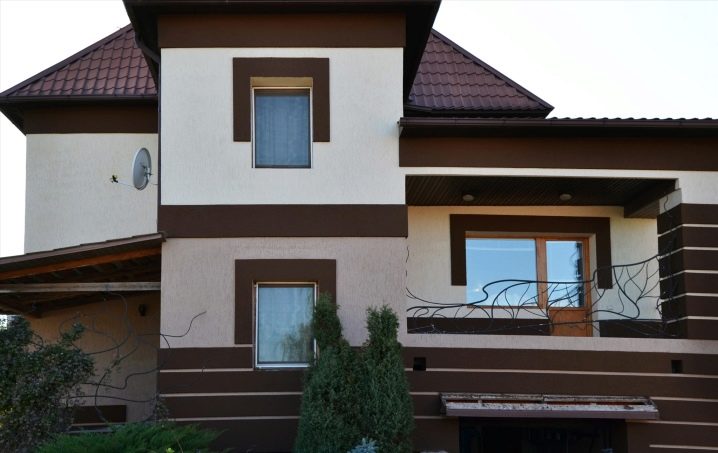
How to apply the "Bark beetle" plaster, see the next video.













The comment was sent successfully.